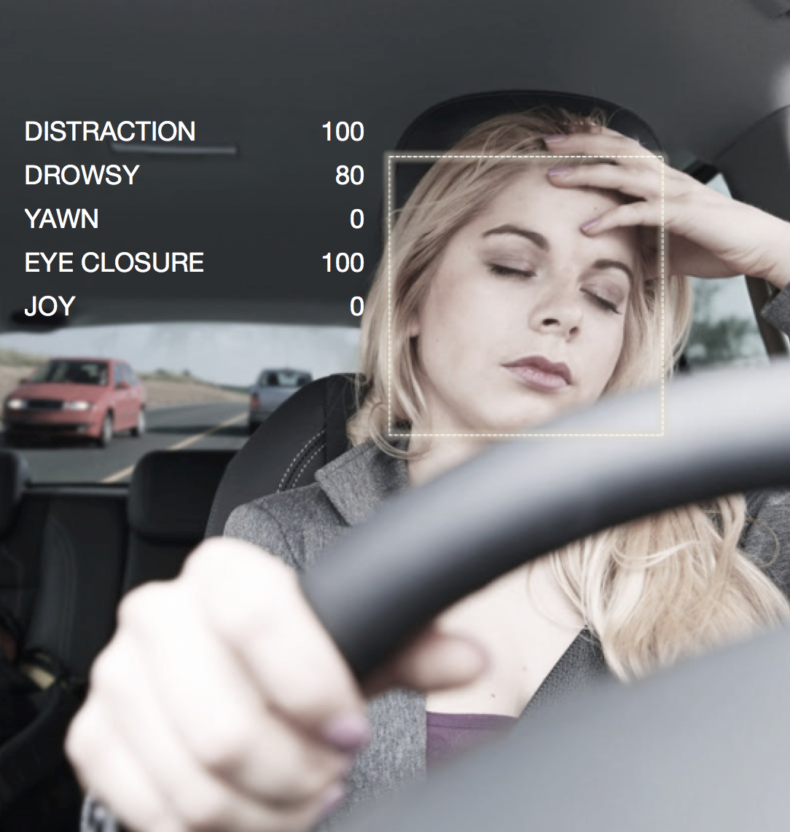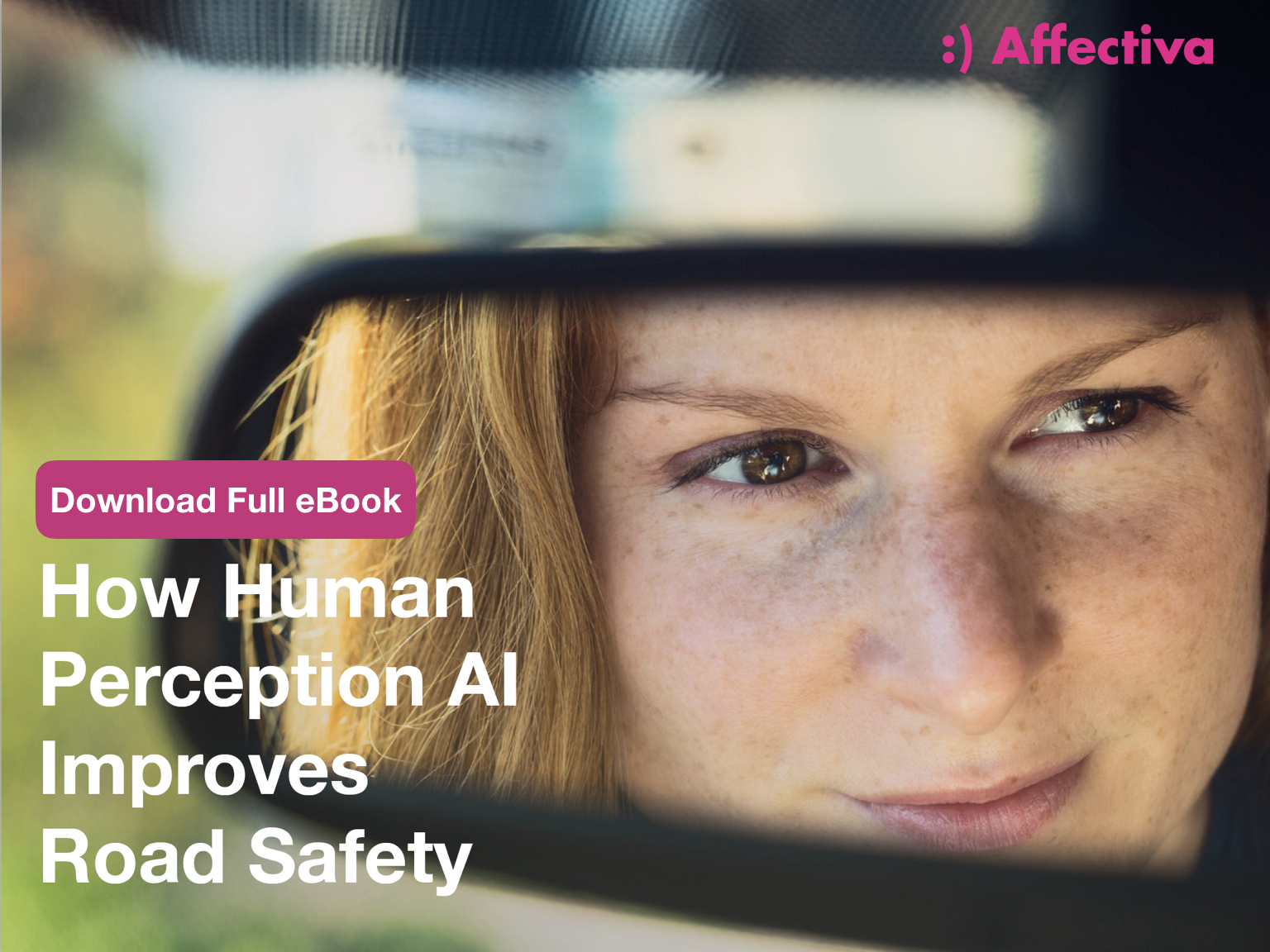
Every day, there are more than 1,000 injuries and nine fatalities caused by distracted driving in the U.S. alone. With the deployment of advanced automation and autonomous driving capabilities, OEMs and Tier 1s face even more safety concerns and considerations. They must also meet safety requirements in accordance with industry regulations such as the European New Car Assessment Programme (Euro NCAP), and be able to scale with evolving safety standards.
To improve road safety, OEMs and Tier 1s must have a deep understanding of the state of the driver: their emotions, levels of drowsiness and distraction, and their reactions to the vehicle systems and driving experience. Using cameras and microphones, Affectiva Automotive AI unobtrusively measures, in real time, complex and nuanced emotional and cognitive states from face and voice. This next generation in-cabin software is fueled by custom deep learning architectures, computer vision, speech processing and massive amounts of real-world data. It enables OEMs and Tier 1s to measure driver impairment and design effective and compelling vehicle adaptations that enhance safety.
Driver State Monitoring
Driver state monitoring systems on the market today are still in their infancy, and there’s a significant gap when it comes to effectively recognizing complex and nuanced cognitive and emotional states—a new technology we call Human Perception AI.
Affectiva Automotive AI takes driver state monitoring to the next level, analyzing both face and voice for levels of driver impairment caused by physical distraction, mental distraction, drowsiness and more.
- Monitor levels of driver fatigue. This enables appropriate alerts and driver assistance that help correct dangerous driving. An audio alert or head unit display instructs the driver to remain engaged; the seat belt or steering wheel vibrates to jolt the driver to attention. Climate control lowers the temperature; radio volume increases and plays lively music. A recommendation is made to pull over to get a coffee or take a break.
- Monitor levels of driver distraction. In addition to the alerts and adaptations for drowsiness, the in-vehicle conversational agent will play an important role bringing the driver back to attention. The agent can advise the driver to pay attention and keep their eyes on the road.
- Address the semi-autonomous vehicle handoff challenge. When sensing driver fatigue, distraction, or other impaired states, the AI can determine if the car must take over control from the driver. And, when the driver is alert and engaged, the vehicle can pass back control.
- Enhance fleet management. Integrated with video-based fleet management solutions, Affectiva detects drowsiness and distraction so the system can prevent incidents by warning the driver in real-time through alerts and prompts. Affectiva’s data also enables fleet managers to focus training efforts more effectively, encouraging positive driving behavior and reducing collision frequency and severity.
Read More
- Driver Monitoring and the Battle Against Texting
- 3 Ways Driver Monitoring Is Improving Road Safety
- Creating A Driver Monitoring System You Can Trust
- How Driver Monitoring Systems are Defining the Future Automotive Experience
- Making Driver Monitoring Systems Reliable, Accessible, and Available with Affectiva
- Driver Monitoring Systems’ Comprehensive Solution to Driver Safety Through Deep Learning
- How Driver Monitoring Systems Will Incorporate Detection Technology To Understand Speech and Facial Expressions






